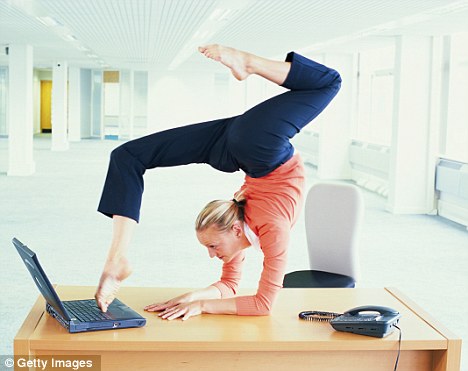
You can’t pick up a newspaper without seeing a headline about balancing screen time for kids. But what about adults’ screen time? You’re often on two screens at once, posting to your company’s Facebook page while monitoring Twitter to jump into customer conversations. Then you toggle over to email to finish a note to a client. At the end of the day, when you crash on your couch, the TV gets your eyes’ attention.
Is it OK to switch your eyes from screen to screen all day every day? Several studies show too much screen hurts our mental and physical health. U.S. adults spend about two hours and 20 minutes per day online, about the same amount of time on smartphones and other mobile devices, and another four hours and 31 minutes watching TV. That’s according to an August 2013 report in Advertising Age magazine.
A 2011 Journal of the American Medical Association analysis found “prolonged TV viewing was associated with increased risk of type 2 diabetes, cardiovascular disease, and…well…death. A 2012 U.S. Department of Agriculture publication noted “strong and consistent evidence in both children and adults … that screen time is directly associated with increased overweight and obesity.”
Are your eyes drying out and blinking uncontrollably now? Don’t bat another eyelid. Health experts encourage taking short, frequent breaks away from the computer to protect your health. Here’s how:
Apply the Rule of 20s
The 20-20-20 rules for eyes suggests you take a break for at least 20 seconds to look at objects that are 20 feet away every 20 minutes.
Take a Walk
It’s better if you can take a moment to not only stand up and stretch, but also leave your work area and walk around. This increases circulation to your muscles, which is good for overall health. You can take it one step further by grabbing a snack or cup of coffee, or doing a non-screen business task.
Have a Seat
If you’re stuck at your desk, there are ways to add the sparkle back to your eyes.
Mayo Clinicrecommends desk stretches. Once you watch the video demonstrations, you can stretch while holding on the phone, during a conference call, while meeting with the team, or as you ponder business matters. WebMD doctors prescribe
these eye exercisesto people with specific eye issues.
As you can see, screen breaks are important to your short- and long-term health, and they’re manageable.
Please comment below with any other tips you have!

